Why the ovaries of peppers fall off and what to do to save the beds
Growing peppers in your garden is a task that requires patience and attention. One of the common problems that gardeners face is the fall of the ovaries after flowering. This happens for a number of reasons - from non-compliance with agricultural practices to unfavorable weather conditions. Let's look at these reasons and how to eliminate them.
Why do the ovaries of peppers fall off?
The culture is demanding of care. At the first signs of falling fruit ovaries, first of all, find out the cause.
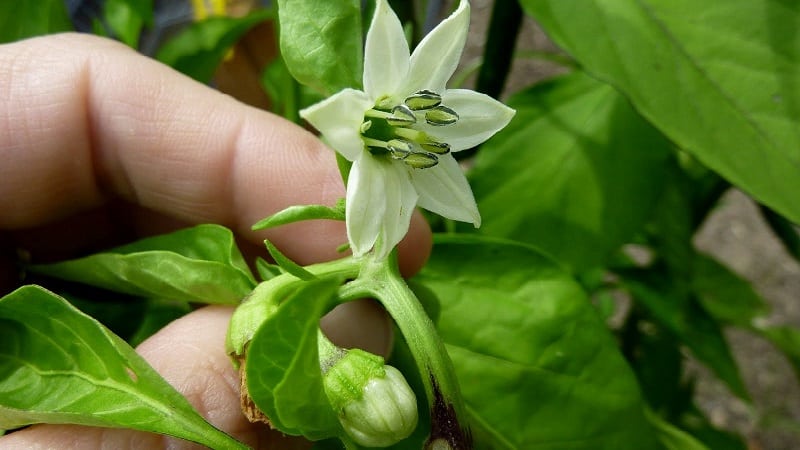
Lack of light
The ideal length of daylight for the growth and development of peppers is 12 hours.. Lack of lighting negatively affects plants - in such conditions, seedlings do not absorb nutrients well and grow weak.
If there is still enough strength for flowering, then further development is inhibited. Weak flowers fall, ovaries do not form.
Lack of moisture
The root system of peppers is almost entirely located in the upper layers of the soil., therefore the slightest lack of moisture negatively affects the entire plant. The soil should be sufficiently moist, especially during the period of ovary formation and fruiting. Otherwise, the receipt of nutrients and further development of the crop are stopped. Already formed ovaries fall off.
Important! Excess water poses no less a threat to the plant than its lack. Excess moisture provokes the appearance of rot and various diseases.
Dry air
A common reason for the ovaries to fall off is inappropriate air humidity. For peppers the indicators are from 60% to 80%. In dry air, it is more difficult for plants to absorb nutrients, they dry out and do not form fruits.
Poor soil composition
The natural mechanism of self-preservation forces plants to shed formed flowers and ovaries during periods of danger and stress.
Nutritional deficiency poses a danger to the life of culture, which disrupts metabolic processes and reduces immunity. This occurs due to a lack of nitrogen, phosphorus, potassium and other elements in the soil. They contribute to the formation, development and ripening of fruits, and their absence causes real stress in peppers. As a result, the leaves turn yellow and fall off, the shoots wither, and the ovaries die.
Basic recommendations for replenishing important substances:
- in light and sandy soil, peppers lack potassium, iodine, magnesium and bromine;
- if the soil is limed, the plants lack manganese, zinc and boron;
- In peat soil, vegetables develop a deficiency of potassium, copper and manganese.
Pollination problems
Such a problem often occurs in unventilated greenhouses. The plants have bisexual flowers, so light air movement is enough for them to pollinate. If this does not happen, the flowers fall off.
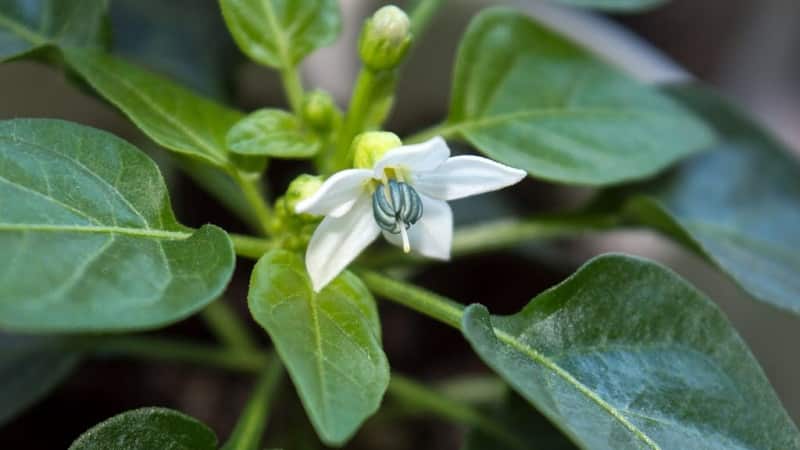
Planting density
In the struggle for the harvest, greed will not help. Peppers cannot be planted close to each other - this will result in no more vegetables. Dense planting will result in plants competing for light, water and nutrients.. In such harsh conditions, not all bushes will receive the nutrition necessary for development, which will lead to the death of the ovaries.
Attention! 3–6 peppers are placed per 1 m² of land, depending on the size of the bushes. This will create favorable conditions for air circulation and prevent plant competition.
Temperature changes
Unstable temperatures have a negative impact on the reproductive abilities of vegetable crops. They reduce plant adaptation, disrupt flowering and fruit formation. Acceptable values for seedlings are +20...+22°C, for adult peppers - +15...+18°C.
But it’s not just cold weather that has a detrimental effect on vegetables. An increase in temperature to +35°C also leads to fall of ovaries and death of plants.
Diseases and pests
Attacks weaken seedlings and already formed plants pests And illnesses. If all the forces of a culture are spent fighting bacteria, fungi and insects, reproduction is impossible, and for self-defense the bushes get rid of inflorescences.
Common pests of peppers:
- Whiteflies - small white butterflies that lay eggs on the underside of leaves. The emerging larvae suck out plant juices, and the bushes wither.
- Spider mites - microscopic arachnids, the presence of which is indicated by small dots on the stems and leaves of peppers and cobwebs. Ticks They feed on the sap of plants - they wither, turn yellow and die.
- Nematodes. These roundworms live deep in the soil and damage the root system of peppers. In affected bushes, yellow-brown thickenings are visible on the roots.
- Medvedki - large, up to 6–8 cm, insects dig labyrinths around plantings, damaging the roots of vegetables, causing wilting and death of the bushes.
- Garden ants feed on honeydew secreted by aphids, thereby increasing the number of the latter. The result is damaged plants and a risk of disease.
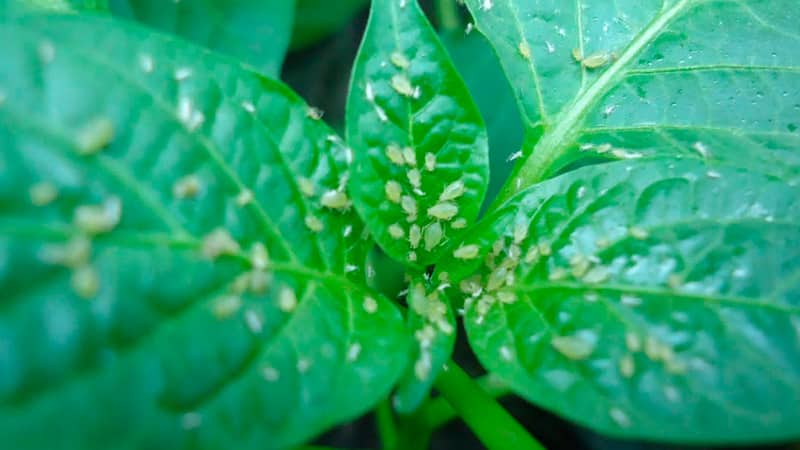
Dangerous cultural diseases:
- Bacterial spot. Small olive-colored oily spots appear on the leaves, which gradually turn black and grow throughout the bush.The leaves and ovaries fall off, the fruits do not ripen.
- Late blight - a fungal disease in which the plant is covered with brown spots, starting from the leaves and ending with the peppers.
- Verticillium. The leaf blades turn pale and deformed, the bushes dry out, become very small or the fruits do not set.
Why do ovaries, flowers, peppers fall off?
Exists several reasons that prompt bushes to get rid of their own flowers, ovaries and fruits. Conventionally, they are divided into agrotechnical errors and climatic conditions.
The main vagaries of the weather:
- Prolonged heat. Peppers feel good even at +20...+30°C, but prolonged elevated temperatures, dry air and soil will force the vegetables to shed their ovaries.
- Overcast. Lack of sun and heat makes the bushes weak and susceptible to disease. All energy will be spent on survival, and flowering and fruiting will be delayed.
- Sudden changes in temperature. Rapid temperature changes during the day provide plants with severe stress. For the purpose of self-defense, they destroy flowers and ovaries.
Errors during cultivation:
- Improper watering. It is important not only to give the roots enough moisture, but also not to flood them.
- Incorrect schedule fertilizing. Excess fertilizers, in particular nitrogen, leads to the growth of powerful green mass in peppers, which will not bear fruit.
- Permanently closed greenhouse. The room is periodically opened for ventilation. Heat and stuffiness provoke the development of diseases and rotting; flowers are not pollinated in a closed greenhouse.
- Lack of prevention pests and diseases. Failure to comply with preventive measures leads to crop loss, as plants will spend energy fighting for survival rather than bearing fruit.
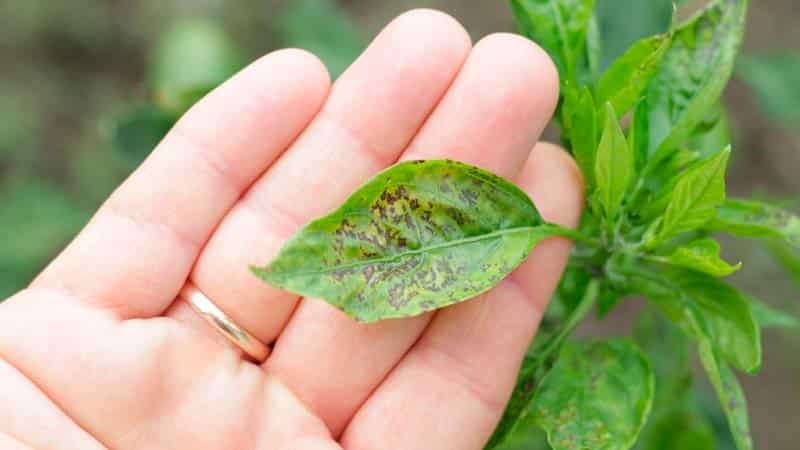
Reasons in the greenhouse and open ground
In the greenhouse, special attention is paid to humidity level. If it is above 80%, the room is ventilated. It is stagnant air that is often the main reason for the fall of the ovaries.
In open ground the main problem - temperature changes. They cause plant stress, slow down their growth and lead to the dropping of flowers and already set fruits.
Strong winds carry pests and pathogens across crops. Both weaken the peppers and make them incapable of bearing fruit.
It can be useful:
Why do you need to pincher peppers and how to do it
What to do
To stop the ovaries from falling off, it is important:
- provide 12-hour lighting and heat levels within +18…+30°C;
- create an optimal planting density using the checkerboard method: according to a pattern of 30x30 cm for low-growing varieties and 40x60 cm for tall, spreading peppers;
- follow the fertilizing regimen: alternate organic and mineral fertilizers every 2 weeks (during the growth period and the beginning of flowering, nitrogen compounds are chosen; during the formation and ripening of fruits, potassium and phosphorus compounds are chosen);
- in hot weather, shade the plantings and ventilate the greenhouses;
- At least once a week, water the bushes generously, followed by loosening and mulching the soil;
- to maintain moisture in the open ground, moisten the paths between the beds daily;
- use traditional methods to control pests: spray plants with infusions of grated laundry soap, garlic, chamomile or yarrow;
- help the pepper by transferring pollen from one plant to another with a cotton swab or brush, or by gently shaking the bush.
Pollination is carried out in the morning at a temperature of +23…+25°C. Pollen will become unviable if the air heats up above +30°C.
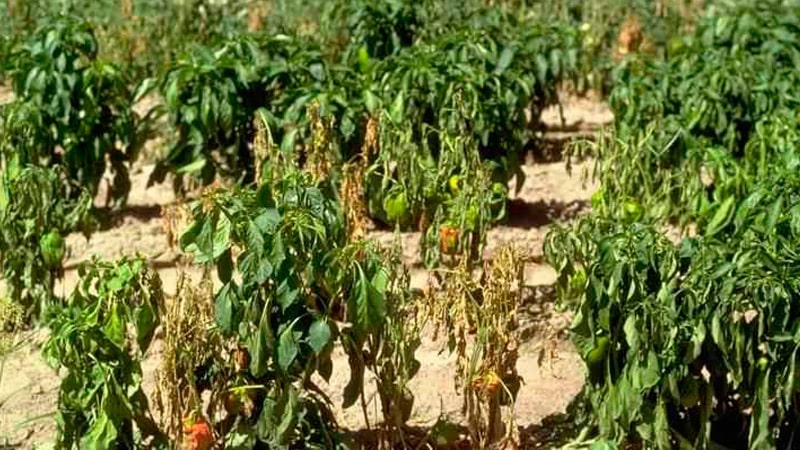
Insecticides are used in advanced cases to combat:
- whiteflies - “Konfidor”, “Fufanon”;
- spider mites - “Inta-Vir”, “Karbofos”;
- mole crickets - “Medvetox”, “Grizzly”;
- ants - “Muravyin”, “Grom-2”.
Nematodes are difficult to control. The soil where they are located is replaced with new one, crop rotation rules are followed, and all tools are disinfected.
Plantings are sprayed against bacterial spotting “Fitosporin-M”, against late blight - “Oxychom”, “Gamair”, copper sulfate. To combat verticillium, Previkur and Maxim are used.
Preventive measures
The best way to avoid mistakes is to not make them. Prevention prevents possible problems. They start by cleaning the area or greenhouse; the soil is disinfected with a solution of potassium permanganate (5 g per bucket of water). This will destroy bacteria, get rid of pests, and stimulate biological processes. In the spring, before planting, the soil is dug up with humus and complex mineral fertilizers.
After planting, peppers are fed once every 2 weeks, alternating mineral and organic fertilizers.
Monitor air and soil humidity, inspect foliage and stems for pests and signs of disease.
Conclusion
For a beginner, the cultivation of peppers is fraught with certain difficulties. Patience and adherence to agricultural techniques will be required. Massive discharge of formed ovaries leads to the death of the entire crop.
To ensure that the work is not in vain, vegetables are provided with suitable growing conditions, their needs for nutrition, temperature, lighting and humidity are met.